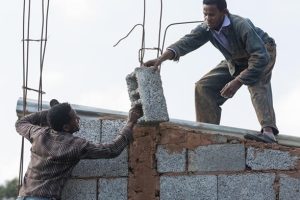Education is not just only reading and writing. It is about using the instruction for their own advantages and know what is right and what is wrong. Education is the most important element for the development of any nation and plays a key role in the development of educated society. Learning is the major factor for self-development; if you learn new things, then you will educate more and more. Without education, anyone will not explore new ideas, there will no creativity; and without creativity, there is no development.
Across the world, we saw that some countries are more developed and others are not. The country which is more growing, the more educated people ratio compares to the country which is less developed. Education is the tool which provides people the required knowledge, skill, technique, and information and enables them to know their rights and duties toward their family, society, and nation. Education enlarges the vision to see the world. It develops the capabilities to fight the injustice, violence, corruption and other factors.
Just as a face is the mirror of the heart, level of education develops the status of the nation. By providing quality education, we can alleviate poverty and contribute to the development of our country. Peoples need quality education to change the minds of their children and make their country a developed one. Cognizant of these facts, the government committed to accelerate the expansion of schools of pre-primary, primary, secondary education and functional adult education in terms of accessibility, and equity.
According to the GTP II mid-term performance report from the National Planning Commission, due attention has been given to leadership training and professional development as well as the management of all primary and secondary education institutions. During the plan period, primary and secondary schools are expected to be managed by skilled and professional school managers to improve efficiency and effectiveness in the teaching-learning process.
To that effect, it was planned to achieve 57 percent coverage of filling the leadership posts of primary schools with first degree graduates in education management in the 2016/17 fiscal year, but only 33 percent of the target was achieved, the report highlighted. Similarly, the target of achieving 50 percent coverage of filling the leadership posts in secondary schools with graduates holding Master’s Degree was not met as it was possible to attain only 23 percent coverage. Although it was planned to increase the share of women leaders in the education sector by 20 percent by the end of the GTP II period, the government has provided special three-month capacity building training for 1,020 women candidates in the 2016/17 fiscal year.
According to the Report, continuous efforts are underway to make teaching a profession of choice, including public awareness creation, offering better salaries, and training academically qualified fresh graduate to join the teaching profession. Currently, four universities have been assigned to train teachers along with carrying out educational research.
Throughout the year, 257,247 (150,808 male and 106,439 female) trainees were attending teacher-training colleges in the country, including new candidates for training of trainers to meet the target of increasing qualified teachers at primary and secondary level. Similarly, it was planned to train 17,000 in summertime programs in the 2016/17 fiscal year and the performance did not exceed to 16,753 teachers. In this fiscal year, 15,419 teachers (female 4,695) have started training in 24 universities.
As a result of the ongoing teacher development program, the proportion of qualified teachers (i.e. those with diploma and above) in the first cycle (1-4) primary education has risen from 55 percent in 2014/15 to 73 percent in 2016/17 fiscal year. Moreover, the proportion of qualified teachers in the second cycle (5-8) primary education has increased from 75 percent in 2014/15 to 82 percent in 2015/16. The number goes down to 81 percent in 2016/17 fiscal year, the Commission explained. Alongside the efforts to improve the quality of education by deploying better qualified teachers, due attention is also being given to reducing the wastage of resources in the education system.
The report also emphasized that the technical and vocational education and training sub-sector has an important role to play in the development of the low and middle level trained and skilled manpower of the country. Therefore, under the regular program, it was planned to increase TVET enrollment from 238,584 in 2014/15 to 596,455 in 2019/20. But, the actual enrollment in 2016/17 fiscal year stood at 296,857. In turn, to equip the unemployed youth with skills and knowledge, it was planned to provide short term technical and vocational training for 1,470,663 youth. Accordingly, 1,098375 youth obtained vocational training during the 2015/16 fiscal years and 1,147,087 in 2016/17 fiscal years, it emphasized.
In terms of accessibility of TVET institutions, out of 915 woredas in the country, 374 woredas (40.8 percent) have been provided with TVET training centers. During the GTP II period, every woreda is planned to have its own TVET training center. In the 2016/17 fiscal year, it was planned to construct 65 TVET training centers in the regions while 40 (62 percent) were actually constructed. Meanwhile, the construction of 34 training centers that began in 2015/16 is still in progress. About 1,409 TVET institutions, which comprise 615 governments and 794 private are now providing training at various levels during the 2016/17 fiscal year.
Likewise, during the 2016/17 fiscal year, the first phase construction of 11 new higher education institutions was already completed; this will contribute to reach, the total number of higher education institutions, to 46. In addition, there were 125 privately owned higher education institutions in operation during the 2016/17 fiscal year. In sum, the education sector has registered encouraging results during the first two years of GTP II implementation.
In addition, problems with very poor quality of education at all levels, inadequate supply and distribution of educational materials, lack of integration in expanding functional adult education, low proportion of female enrolment in higher educational institutions, high dropout and low completion rates, particularly in primary school education, low access to secondary school education in some parts of the country are still the major challenges of the sector. Thus, comprehensive problem-solving dimensions are needed to make sure that the public is earning appropriate returns from the country’s wide-ranging investments in the sector, the report suggested.
Herald January 12/2019
BY ZELALEM GIRMA





